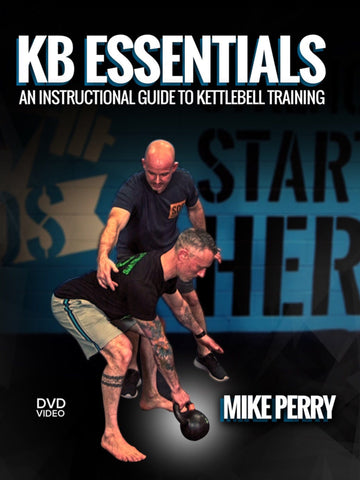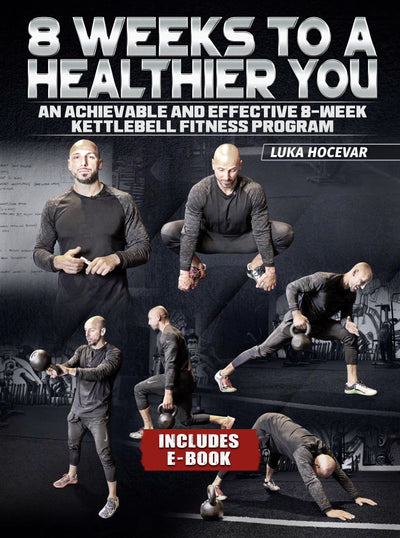Elevating Your Cardio with Kettlebell Workouts
Kettlebell workouts aren't just about building strength; they can also be a dynamic and effective way to enhance your cardiovascular fitness. In this guide, we'll explore the world of kettlebell cardio workouts, the science behind them, and how to create an efficient and stimulating routine that elevates your heart rate and boosts your cardiovascular health.
What this article covers:
- The Science Behind Kettlebell Cardio Workouts
- Kettlebell Exercises for Cardio
- Creating an Effective Kettlebell Cardio Routine
The Science Behind Kettlebell Cardio Workouts
Kettlebell cardio workouts are a powerful tool for improving your cardiovascular fitness. Here's why they are so effective:
Elevated Heart Rate: Many kettlebell exercises are high-intensity, incorporating explosive movements that raise your heart rate rapidly. This cardiovascular response enhances aerobic capacity and endurance.
Total Body Engagement: Kettlebell movements typically engage multiple muscle groups simultaneously. This full-body involvement increases the demand for oxygen, fostering cardiovascular development.
Metabolic Boost: Kettlebell cardio workouts stimulate the EPOC (Excess Post-Exercise Oxygen Consumption) effect, causing your body to continue burning calories at an elevated rate after the workout.
If you are looking for kettlebells for weight loss, kettlebell swings fat loss, kettlebell hiit workouts, or beginner kettlebell workout for weight loss we have you covered!
Kettlebell Exercises for Cardio
Here are some of the most effective kettlebell exercises for cardio:
Kettlebell Swings
Muscle Groups Targeted: Swings primarily engage the posterior chain (glutes, hamstrings, lower back) and activate the core.
Technique: Stand with your feet hip-width apart and perform explosive swings, propelling the kettlebell from between your legs up to chest height. The rapid, forceful movement elevates your heart rate and enhances cardiovascular fitness.
Kettlebell Snatches
Muscle Groups Targeted: Snatches engage the hips, shoulders, and arms and significantly boost cardiovascular endurance.
Technique: Start with the kettlebell on the ground and lift it to an overhead position in one fluid motion. The explosive nature of snatches challenges your cardiovascular system while building strength.
Kettlebell High Pulls
Muscle Groups Targeted: High pulls target the back, shoulders, and legs.
Technique: Execute high pulls by explosively pulling the kettlebell from the ground to chest height. The dynamic movement combines strength and cardio elements.
Kettlebell Burpees
Muscle Groups Targeted: Burpees are a full-body exercise, and adding a kettlebell to the mix intensifies the cardio aspect.
Technique: Begin with the kettlebell on the ground, perform a push-up, jump to your feet, and finish with a swing of the kettlebell overhead.
Kettlebell Circuits
Muscle Groups Targeted: Circuit-style workouts combine a variety of kettlebell exercises, delivering a potent cardiovascular challenge.
Technique: Create circuits that include swings, snatches, and high pulls. Perform each exercise with minimal rest between them to maintain an elevated heart rate.
Creating an Effective Kettlebell Cardio Routine
To design a successful kettlebell cardio routine, follow these guidelines:
- Warm-Up:
- Importance of Warm-Up: A proper warm-up is crucial before any kettlebell cardio workout. It prepares your muscles and cardiovascular system for the increased intensity.
- Dynamic Stretching: Include dynamic stretches such as arm circles, leg swings, and torso twists. These movements help increase blood flow, improve range of motion, and elevate your heart rate gradually.
- Interval Training (High-Intensity Interval Training - HIIT):
- HIIT Explained: High-intensity interval training is at the core of kettlebell cardio workouts. It involves alternating between short, intense bursts of exercise and brief recovery periods. HIIT efficiently boosts your cardiovascular fitness.
- Sample HIIT Kettlebell Workout: Consider a 20-minute HIIT routine with 30 seconds of intense kettlebell swings followed by 20 seconds of rest. Repeat this cycle for a total of 15-20 minutes. The intense swings raise your heart rate, while the short rest intervals allow for recovery.
- Progressive Overload:
- Gradual Progression: As you become more conditioned, it's essential to progressively overload your routine. This can involve increasing the intensity or volume of your workouts.
- Examples of Progression: You might start with a 16 kg (35 lbs) kettlebell for your swings and then gradually increase the weight to 20 kg (44 lbs) as your cardiovascular fitness improves. Alternatively, you can add more sets, repetitions, or advanced exercises to challenge yourself.
- Consistency:
- Frequency: Aim for consistent kettlebell cardio workouts. A good target is 3-5 times a week. Regularity ensures that your cardiovascular fitness continues to improve and helps with weight management.
- Rest Days: While consistency is vital, don't forget the importance of rest. Allow your body to recover to prevent overtraining and reduce the risk of injury.
- Cool Down:
- Cool-Down Benefits: After a vigorous kettlebell cardio workout, a cool-down period is essential to gradually reduce your heart rate, improve flexibility, and reduce muscle soreness.
- Static Stretching: Incorporate static stretches for major muscle groups used during your workout. Focus on areas like the quads, hamstrings, calves, shoulders, and chest. Hold each stretch for 15-30 seconds to improve flexibility and reduce post-workout tightness.
- Hydration and Nutrition:
- Stay Hydrated: Proper hydration is essential for cardiovascular workouts. Be sure to drink enough water before, during, and after your sessions.
- Nutrition Matters: Pay attention to your nutrition. Fuel your body with a balanced diet that includes complex carbohydrates, lean proteins, and healthy fats. These nutrients provide the energy needed for intense kettlebell cardio workouts.
- Rest and Recovery:
- Sleep: Ensure you get adequate sleep. A well-rested body is better equipped to perform during cardio workouts and recover efficiently.
- Active Recovery: On your rest days, consider light activities like walking, swimming, or yoga to aid recovery without placing undue stress on your muscles.
By following these comprehensive guidelines, you can create an effective kettlebell cardio routine that not only elevates your heart rate and boosts your cardiovascular fitness but also promotes overall well-being. Keep in mind that individual fitness levels and goals can vary, so adjust your routine to suit your needs and preferences.
In conclusion, kettlebell cardio workouts are a dynamic and effective way to enhance your cardiovascular fitness. By incorporating the right exercises, structuring your routine effectively, and maintaining consistency, you can elevate your heart rate, burn calories, and boost your cardiovascular health with kettlebell workouts.
Did you find the blog helpful? If so, consider checking out other guides:
- Kettlebells Workout for Beginners
- Kettlebell Weight for Beginners
- Kettlebell Workouts for Female Beginners
- Advanced Kettlebell Workout
- A 3-Day-a-Week Kettlebell Workout
- The Power of a Morning Kettlebell Workout
- A Guide to Using Kettlebells
- Bodyweight and Kettlebell Workout
- CrossFit RX Kettlebell Weight
- Finding the Perfect Kettlebell Weight
- Safely Increasing Weight for Optimal Progress
- Kettlebell Workout Program
- 12 Week Kettlebell Workout Program
- Full Body Kettlebell Workout Program
- Kettlebell and Barbell Program





